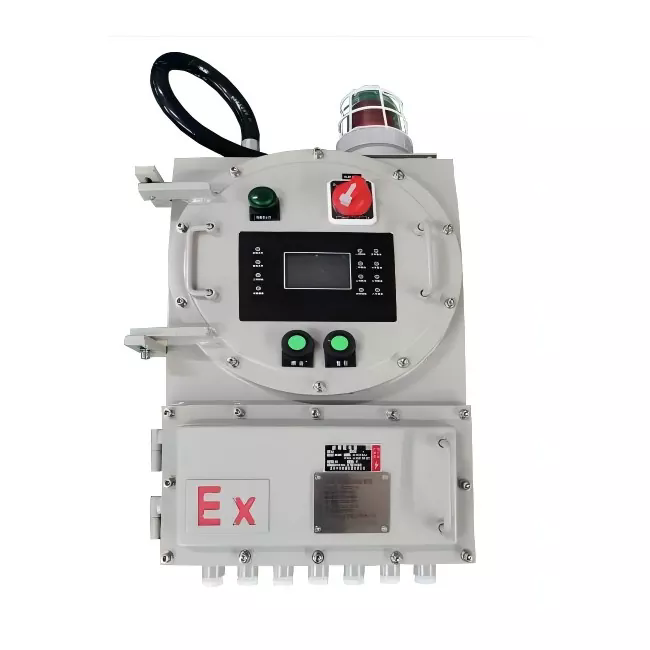How Does a Control Alarm Improve Safety and Efficiency in Modern Systems?
2025-10-09
In today’s automated world, a Control Alarm plays a vital role in ensuring both operational safety and system reliability. It is a device or integrated system that detects, alerts, and records abnormal conditions within industrial, commercial, or residential settings. Control alarms are the front line of defense against mechanical failures, power outages, temperature fluctuations, pressure imbalance, or hazardous gas leaks.
A well-designed Control Alarm System acts as the brain of your monitoring network. It continuously tracks key parameters and instantly triggers visual or audible alerts when readings deviate from preset thresholds. This early detection prevents downtime, equipment damage, and safety hazards.
In industrial automation, control alarms are typically used in:
-
Manufacturing facilities – to monitor temperature, vibration, and machine performance.
-
Power plants – to detect load fluctuations or cooling failures.
-
HVAC systems – to maintain optimal air and temperature balance.
-
Water treatment plants – to control pressure and flow levels.
-
Security systems – to signal unauthorized access or fire risks.
By integrating a control alarm, businesses minimize human error and ensure compliance with safety standards such as ISO 13849, IEC 61508, or UL certifications, depending on the application.
How Does a Control Alarm Work and What Are Its Key Components?
A Control Alarm System operates by continuously measuring process variables through sensors or transducers, comparing them with setpoints, and triggering alarms when deviations are detected. This closed-loop mechanism ensures timely response and precise monitoring.
The operational workflow typically follows these stages:
-
Input Detection: Sensors detect physical changes (e.g., pressure, temperature, flow, voltage).
-
Signal Processing: The control unit interprets data from sensors.
-
Threshold Evaluation: The system compares live readings with preset safe limits.
-
Alarm Activation: If an abnormal condition occurs, the system triggers audible, visual, or remote alerts.
-
Logging and Reporting: Events are recorded for analysis and preventive maintenance.
Below is a technical specification table for a standard industrial-grade Control Alarm system:
| Parameter | Specification | Description |
|---|---|---|
| Input Type | Analog / Digital / Modbus | Supports multiple sensor interfaces |
| Operating Voltage | 12V / 24V / 48V DC | Compatible with standard industrial systems |
| Alarm Output | Relay, Buzzer, LED Indicator | Multiple alert modes for flexibility |
| Display | LCD / OLED | Real-time parameter display |
| Communication Interface | RS485, CAN, Ethernet | Enables integration with PLCs and SCADA systems |
| Temperature Range | -20°C to +70°C | Stable performance under harsh environments |
| Accuracy | ±0.1% | High measurement precision |
| Response Time | <1 second | Fast signal detection and alarm response |
| Mounting Type | Panel / Wall / DIN Rail | Flexible installation options |
| Protection Rating | IP65 / IP67 | Dustproof and waterproof enclosure |
These specifications ensure high adaptability and reliability, making Control Alarms suitable for demanding industrial or commercial applications.
Moreover, modern digital Control Alarms are equipped with advanced features such as:
-
Remote Monitoring via IoT integration
-
Cloud data storage and analytics
-
Self-diagnostic functions
-
Customizable alarm thresholds
-
Energy-efficient operation
These intelligent features allow operators to manage systems from centralized control rooms or even via mobile applications, significantly improving response time and maintenance planning.
Why Should Businesses Invest in a Reliable Control Alarm System?
The importance of Control Alarms extends far beyond simple notifications. They represent a proactive strategy toward risk prevention, operational efficiency, and cost reduction.
Key Benefits of Installing Control Alarms:
-
Enhanced Safety:
Control alarms immediately alert operators to hazardous conditions such as gas leaks, overheating, or equipment malfunctions, helping prevent accidents and workplace injuries. -
Reduced Downtime:
Early detection of system faults allows maintenance teams to act quickly, preventing production loss and costly repairs. -
Energy Efficiency:
By monitoring performance metrics, control alarms help identify areas of energy waste and inefficiency. -
Regulatory Compliance:
Many industries require alarm systems for legal or insurance purposes. A certified control alarm helps meet safety regulations and avoid penalties. -
Data-Driven Maintenance:
Modern control alarms log every event, allowing engineers to analyze patterns and plan predictive maintenance strategies. -
Cost Optimization:
The investment in a control alarm pays off by minimizing machine wear, reducing unplanned shutdowns, and extending equipment life span.
Real-World Application Example:
In a manufacturing facility, temperature control is critical for machinery efficiency. If a motor overheats, it can cause serious damage or fire. With a control alarm, once the temperature exceeds 80°C, the system immediately shuts down power and triggers an audible alert, notifying operators and preventing damage.
This automated intervention not only saves equipment but also protects human operators and avoids production interruptions.
What Are Common Questions About Control Alarms? (FAQ)
Q1: What factors should I consider when selecting a Control Alarm for my system?
A1: When choosing a control alarm, consider factors such as input type (analog/digital), power supply, compatibility with existing PLC or SCADA systems, environmental protection (IP rating), response time, and customization options. For example, if your facility operates in high-humidity conditions, select a waterproof and dustproof model with an IP67 rating. Additionally, check for compliance with safety standards to ensure reliable performance in critical applications.
Q2: Can a Control Alarm be integrated with IoT or Smart Factory systems?
A2: Yes. Many advanced control alarms are designed with IoT compatibility. They can transmit real-time data via Wi-Fi, Ethernet, or RS485 to central monitoring systems. Integration with smart factory solutions enables remote supervision, predictive maintenance alerts, and energy optimization, all of which improve operational intelligence and scalability.
How Eranntex Helps You Build a Smarter, Safer Control System
A Control Alarm System is not just an alert device—it’s the foundation of safe, efficient, and intelligent operations. Whether it’s used in industrial automation, environmental monitoring, or building management, the system’s role in preventing damage, improving reliability, and maintaining compliance is irreplaceable.
Eranntex, as a trusted manufacturer in the control and automation field, provides high-performance Control Alarms built with cutting-edge technology and strict quality control. Each product is engineered for precision, durability, and flexibility to meet diverse industrial demands.
If you’re looking to enhance your system safety or modernize your plant automation, Eranntex’s advanced Control Alarm solutions are your reliable choice.
Contact us today to discuss your project needs, request product specifications, or receive expert consultation on how to integrate the best Control Alarm system for your business.



